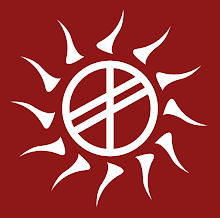The idea of the modulation bus is came from the Minimoog Voyager, which uses this simple idea, to enable the user, to quickly dial in modulation settings. The Voyager came with 2 independent modbusses, with slightly different capabilities, and the Voyager Oldschool (which is 100% analog, without the digital patch storage, and control) uses modbusses with even more control possibilities.
The Minimoog Voyager's modbus:
The Minimoog Voyager Oldschool offers more sources, desinations, and controller/shaping options, which makes this instrument more flexible:
The user can select a modulation source with the "source" selector, the modulation destination, and then the controller, which will influence the modulation, like the keyboard velocity, or an external pedal. Finally, the amount knob makes possible to set the intensity of the modulation.
I think, this idea is very useful, even in semi-modular synths. No patch cables are needed, many of the modulations are possible with a few simple settings, and they are easy to remember.
I've started to experiment with modbusses in my monosynth prototype. In my current setup, the modbus needs to be more flexible than the Voyager's modbus, because my synth has more CV sources, and more possible modulation destinations. My implementation of the thing looks like this:
Every modbus needs a VCA which passes CV signals and audio signals too (has no blocking capacitors on the inputs), and rotary switches to select source, destination, and shaper settings. I'm using 12 position rotary switches for the dest/source/shaper settings. The amount knob controls the VCA's input CV level. If the amount knob is set to the maximum, the VCA's output level is maxed, and if the knob is set to zero, the VCA's output is totally silent (no modulation).
The useful setup for me is the following for modbus1:
- Sources: VCO1, VCO2, SUB osc1, ENV1, ENV2, LFO1, LFO2, LFO3, Mixer output, Saw anim CV1, Saw anim CV2 (they are simple LFOs), and Keyboard CV
- Destinations: VCO1 frequency, VCO2 frequency, VCO1+2 frequency, Mixer input, VCF cutoff, VCA1 CV, VCA2 CV, VCA1+2 CV, ENV1 trigger, ENV2 trigger, SawAnim 1 CV, SawAnim 2 CV
- Shapers: Keyboard CV, Keyboard AUX (f.e. modwheel), ENV1, ENV2, ENV1 inv, ENV2 inv, LFO1, LFO2, LFO3, SUB1, SawA1, None
My modulation busses allows the extraction of the final modulation signals, and the injection of an external source or shaper signal, which makes them integrate with the patch panel of the synth.










No comments:
Post a Comment